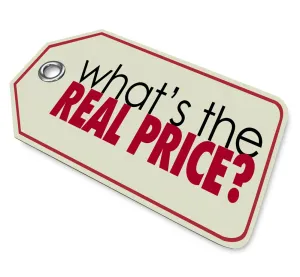A number of years ago, I worked for a financial advisory firm that was affiliated with a broker-dealer (b-d) network of a few hundred businesses throughout the country. Each year, the b-d would take it’s best firm owner customers and their spouses on a fully paid trip. This particular year, it was to Hawaii. Unfortunately, during a scuba diving excursion, one of the owners suffered a heart attack and died.
On top of the shock his family and employees were experiencing, it quickly came to light that he did not have a continuity plan in place. As a result, his family, during their time of mourning, had to scramble to not only keep the firm going day-to-day, but also decide on a longer term solution. As emotionally difficult as the situation was, it also had serious financial implications. Most small business owners have anywhere from 40% to 80% of their family wealth tied up in their business, and this situation was no different.
Luckily for the family, the b-d was a huge help. They provided additional services and technical support to help keep the business operating and even assisted with finding a buyer. While the company wound up being sold at a discount, it was a much better outcome than a fire sale, or worse yet, having the business dissolve.
In this case, the firm had a great relationship with a critical supplier, who was willing and able to step in and help during a crisis. Unfortunately, most small businesses who haven’t adequately planned aren’t so lucky.
What is a Business Continuity Plan?
As the name implies, a business continuity plan is a document that contains everything needed to successfully preserve the company’s value in the event of an owner’s death or incapacitation. There are 2 parts of a good plan. The first is the information that the family and employees need to keep the business going over the short term. The other is a longer-term strategy for the company in the event that the owner will be permanently absent.
A solid plan requires time and effort but is definitely something owners can do on their own. However, if you’d like assistance, there are business and exit planning consultants available to help. Let’s look at what’s included in a plan.
The Emergency Kit
This is where your family and key employees will find the critically important information that’s needed for running daily business operations over the short term. It would include such items as:
- Bank account information
- Insurance policy information
- Points of contact for key business advisors – CPA, Banker, Attorney, Insurance Agent, etc
- Lists of key suppliers and customers
- Passwords
- Information about trade secrets, patents, and other intellectual property
- Who has short-term decision making authority
This is just a start. Every business is unique and the emergency kit should include everything needed to run the business as efficiently as possible in the days and weeks immediately following your absence. If the document is complete, your family and key employees should be able to find the answers to the following questions:
1. What do you, as the owner, do on a daily basis in the company?
2. What information do you have that others would need to know about in order to perform these tasks?
Once you think you have everything covered, have your spouse and key employees to review it. They will probably come up with some additional items that need to be addressed.
Long-Term Strategy
This is the portion of the plan that spells out your intentions for the company if you are expected to be incapacitated indefinitely or have died. This may or may not be the exit plan you currently have in mind. For example, if your current goal is to one day pass the business along to your children, but they are still in high school or college, an alternate plan is needed.
In some cases, this strategy could be similar to what you had envisioned if nothing had ever happened. However, additional contingencies may need to be put in place to help ensure its success. Let’s say your plan was to sell the business to your key employees several years from now. If the timetable was accelerated would this plan still work? If not, why not? Could these obstacles be overcome? If so, how?
A common reason I hear from owners planning an employee sale is their lieutenants aren’t quite ready to take over. One solution to this could be to have a ‘just in case’ arrangement with an outside advisor you have already vetted. That way, your employess will know who you want to come in to help manage the business and finish their training.
If you already have a contingency plan in place, congratulations, you’re ahead of the game. Now, when was the last time it was reviewed and updated? If it includes a buy-sell agreement, that should be reviewed on a regular basis as well. For instance, does the buyout amount reflect the company’s current market value? If the buyout is to be financed, is the financing still adequate? A large percentage of buy-sell agreements use life insurance to provide at least part of the buyout funds. If yours does, when was the policy last reviewed by an insurance professional?
If you died yesterday…
What would be going on at your company today? Do your loved ones and key employees have a good answer to this question? If not, then putting a business continuity plan in place will be time well spent.




